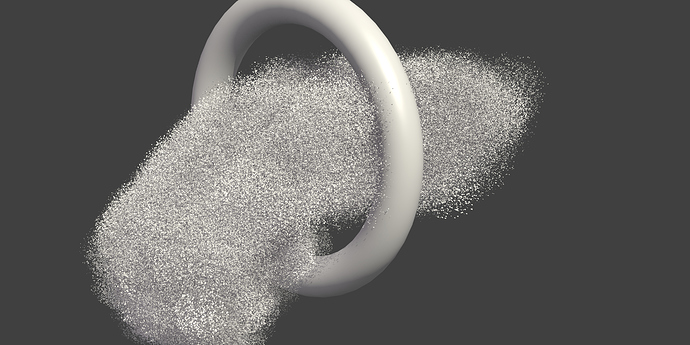@jonathan L
the problem is that I have to do an animation of that. I can’t in the universe take 1 day for each frame.
The way it is I am already thinking that I will have to pay a renderfarm… IF I there is a renderfarm that can take the many gigas of particles I have
@voodoc the problem with that is that I lose shading. Right now, they are cubes with smooth normal. Meaning that all of them see the sun light. Triangles or tetrahedron would make it look a lot worse, that could only be compensated with a bigger number of instances. In my tests, there is barely any difference in render efficiency with WHAT I am instancing. The problem is how MANY instances there are.
But I will test it further too.
Ow, and I need a good still. That is what would justify the time I am spending in the company I work for with this. They don’t do animations.
But for the still, I may use the volume, that gets much better then anything I can do with particles alone.
For now, I am testing.
Just don’t know how I will test the animation. It will take a while to render tests
@georg
Thanks. Do you think they would hear? I have things I think are VERY important. If this projects help me get heard, by itself it would be worthy.
I have many requests, right now, here are the 2 most important ones I can remember (besides many problems of the particle system they are very aware of, or things very difficult to do, like on render displacement) :
*DYNAMIC VERTEX GROUP CREATION - This may be the most important thing. There are many things you just can’t do without it, while the other problems you can have a workaround.
Right now, if I want to create a “vertex weight proximity” controlled by an outside object, for instance, I have to enter edit mode and MANUALLY assign some value (say, 0,6, it won’t matter much, because the control will be dynamic with the proximity), and only then the modifier can influence the vertex group. That limits a lot this otherwise great modifier. There are many modifiers that destroy the vertex group information (ocean, decimator, remesh, fluid simulator, etc), but there is no reason why they should not be able to be dynamically recreated after them. We can modify the vertex group in any time now, why not modify the values from 0 to something? My suggestion would be a new modifier “CREATE VERTEX GROUP MODIFIER”, for instance. With it, you could assign a value to all vertex in the object, that would be later controlled by the other modifiers.
This would allow me to do so much more, so easily… If you want, I can name a few hundred great functions it could have.
*INSTANCING MODIFIERS - The way it is now, I have to create drivers if I want to share a value betwen modifiers of many objects. A node system would be ideal, but if they could just be instanced, like in 3ds max it would be such a BIIIIG HELP. I can stress how easier my life would be.
I understand that many modifiers depends on the object or the order of modifiers, but maybe blender could auto detect what modifiers we KNOW have no need for order of object specifics. Like the subdivision surface. Imagine how wonderfull would it be to be able to control the subdivision of a number of objects in your scene, all in the same time, without drivers, simply instancing the modifiers? Like the “ctrl L”, but they would be really linked.
I mean, come on, we can have the mesh linked (change one, change the other), the material linked (change one, change the other), why not the modifiers? Why can’t I change one and change other?



 My apologies if I have been less than helpful, I haven’t gotten much sleep this week.
My apologies if I have been less than helpful, I haven’t gotten much sleep this week.

